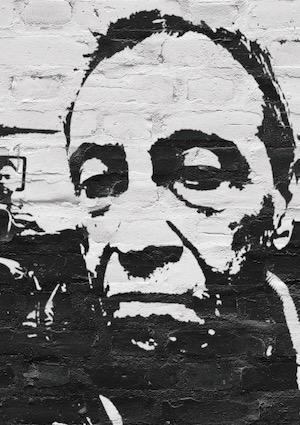 Back in January 2015 I launched a series of posts that I titled “Film the Police.” In it I commented on a number of what were then recently published videos of U.S. police abuse of the citizenry at large — mostly, though hardly exclusively, targeting people of color.
Back in January 2015 I launched a series of posts that I titled “Film the Police.” In it I commented on a number of what were then recently published videos of U.S. police abuse of the citizenry at large — mostly, though hardly exclusively, targeting people of color.
The series started officially with a response to the killing of Eric Garner at a location just a ten-minute walk from my house, but had as its prelude my extensive 2011-13 analysis of the “Pepper-Spray Cop” scandal at the University of California-Davis.
After posting my comments on the Eric Garner homicide — which took place in a neighborhood I know well, just five blocks from where I live — I began gathering links to related audio and video documentation of comparable incidents of excessive and even criminal police behavior: citizen journalism, surveillance-cam footage, and police bodycam records. I planned to address them as visual evidence produced via the lens-based media.
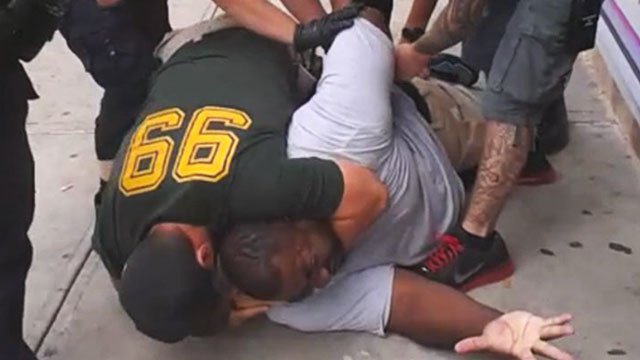
Cellphone video screenshot (YouTube), lethal Eric Garner chokehold by NYPD officer Daniel Pantaleo, 7-15-14
As I came across further incidents, both past and present, these links accumulated, and I began sorting them into rough categories: killer cops, brutal cops, rapist cops, power-abusing cops, racist cops, corrupt cops, perjuring cops, pedophile cops, thieving cops, and so on. Aside from manifesting one or another form of dereliction of duty and/or criminality, they had in common two things: (a) perps with governmentally authorized possession of badges, guns, and licenses to kill; and (b) existing photographic documentation — still and/or video — of crimes and other manifestations of grossly inappropriate behavior.
•
I planned to offer annotated selections of these public documents at this blog for your consideration. (I avoid the use here of “curated,” now so debased that one can “curate” a wardrobe and even a meal. Once you start talking about “the art of collecting,” this is where you end up. But I digress.)
I didn’t presume that I had anything unique or valuable to contribute to the emerging discussion of police malfeasance. I just thought that the readers of this blog should know that, in my opinion, the visual evidence of this collective assault on the citizenry seems incontrovertible, and that these incidents did not represent scattered, unrelated actions by the inevitable “bad apples,” but instead came as proof positive of systemic racism, a profoundly corrupt nationwide policing structure, and the intersection of the two.
(I should add that the frequently professed “bad apple” excuse for these behaviors neglects the context in which that phrase resides: “One bad apple spoils the barrel.” For each bad apple, therefore, you get a spoiled barrel.)
To which we can add a new twist: Volunteer vigilante policing of people of color. As if pandemic official over-policing of these citizens weren’t enough, just this past year or so we’ve had napping in the college dorm while black, selling bottled water on the street while black, bicycling while black, bird-watching while black, barbecuing in the park while black, loading luggage into your car trunk while black, waiting at Starbucks while black, and golfing while black — and that’s at the low end (no actual physical harm done to the black people involved) of the spectrum.
•
At the time I conceived this series, this material seemed to get only sporadic and short-term attention. Nowadays these incidents come along so thick and fast, go viral so quickly, and receive such extensive media attention that I credit my readers with full awareness of their variety, quantity, and gravity.
So I don’t feel a need to confront you with batches of these videos. If you’re paying attention to the culture in which you live, as I credit all my readers with doing, you know this already, in your bones. And you have enough media savvy to gather clusters similar to mine, if you want to convince yourselves; just go to any search engine, or YouTube, key in terms like “racist cops,” “police brutality,” etc., and watch what turns up. You could make some popcorn. In most cases, if you really want to familiarize yourself with the pattern, you best bring a lunch; one could do a whole Cannes Film Festival of this stuff. And there’s lots more in production as we speak, I guarantee you.
These videos manifest systemic racism at work on the most basic level. If you have any capacity for empathy, you won’t need Ta-Nehisi Coates’s Between the World and Me to explain it to you. The power of lens-based imagery, its immediacy and credibility, lets you experience these incidents from the victims’ perspectives, even when they come in the form of police body-cam recordings.
Fair warning: Any one of these videos will disturb you. Watching any cluster thereof becomes depressing and alarming, not least because white privilege doesn’t automatically kick in (white people, including white men, get their share — though perhaps not their fair share — of abuse). But mostly because they demonstrate that all of us in this country live in a police state, with some of us simply made more keenly aware of that fact than others on a daily basis. Bottom line: This — any of this — could happen to you.
The headline on a May 13, 2019 CBS News story, “Five years after Eric Garner’s death, disciplinary trial begins for NYPD cop,” reveals how slowly and reluctantly the national police structure works in pursuing even the most egregious cases. Nothing resembling justice ensued, another common denominator of the majority of these cases. Nonetheless, this seems an appropriate moment at which to leave maintaining awareness of this national crisis in your hands.
•
James Comey, the disgraced ex-director of the Federal Bureau of Investigation — as the agency’s 7th director he served from 2013 until his dismissal in May 2017 — made it clear during his tenure that, while well aware of the absence of national statistics and other information related to police misbehavior, he and the FBI under him had no intention whatsoever of doing anything about that. He preferred in 2016 to postulate that what he called a “viral video effect” — referred to by others as a “Ferguson effect” — inhibited police in the performance of their duties.
Right. We’ve all seen in videos since then just how constrained police across the U.S. feel in their dealings with the public. Just consider the source of this unadulterated bullshit: The man who knowingly cost Hillary Clinton the presidency in 2016 by publicly reopening the specious investigation into her emails just days before the election while keeping the agency’s simultaneous investigation of the Trump campaign’s collusion with Russia under wraps.
Since the FBI refuses to do the job, it falls on us as citizens to gather the necessary information. Beyond encouraging you to get woke to this frightening pattern by checking out reports on individual instances (especially in your own communities), I recommend familiarizing yourself with the following websites, all committed to achieving what the Federal Bureau of Investigation has effectively refused to do: track, annotate, and analyze police malfeasance nationwide.
• USA TODAY. See “We found 85,000 cops who’ve been investigated for misconduct. Now you can read their records,” by John Kelly and Mark Nichols, USA TODAY, May 1, 2019. “USA TODAY is leading a national effort to obtain and publish disciplinary and misconduct records for thousands of police officers.”
(See also the most recent dump of secret police-force internal data, “‘BlueLeaks’ Exposes Files from Hundreds of Police Departments.”)
![]() • For some of the cost of this broken system, see “Police Misconduct Payouts: A curated collection of links,” collected and updated by The Marshall Project, “a nonpartisan, nonprofit news organization that seeks to create and sustain a sense of national urgency about the U.S. criminal justice system.”
• For some of the cost of this broken system, see “Police Misconduct Payouts: A curated collection of links,” collected and updated by The Marshall Project, “a nonpartisan, nonprofit news organization that seeks to create and sustain a sense of national urgency about the U.S. criminal justice system.”
(In this regard, see also the July 2015 account “Cost Of Police Misconduct Soars; Big Cities Pay $1 Billion-Plus” published by the Crime Report, an effort by the Institute for Nonprofit News.
• The Citizens Police Data Project (CPDP.co), which concentrates on Chicago, IL, exemplifies how each city can, and should, monitor its police force. “CPDP takes records of police interactions with the public — records that would otherwise be buried in internal databases — and opens them up to make the data useful to the public, creating a permanent record for every police officer. … Designed to serve as a national model for transparency, the Citizens Police Data Project is the product of a decade-long collaboration with the University of Chicago Law School’s Mandel Legal Aid Clinic.”
(For Chicago, see also Lucy Parsons Labs, “a charitable Chicago-based collaboration between data scientists, transparency activists, artists, & technologists that sheds light on the intersection of digital rights and on-the-streets issues.”)
• See also the New York Times report by Timothy Williams from Sept. 10, 2016, “Cast-Out Police Officers Are Often Hired in Other Cities.”
•
The Government’s Violence Machine
The Chinese government’s concept of the role of police in society differs considerably (at least nominally) from that of most western countries, with their variant on a “protect and serve” motto. According to the South China Morning Post, in a July 2013 viral video an unidentified government official from the complaint bureau in Suzhou, in eastern China’s Jiangsu province, tells an angry crowd, “If the police don’t beat people, what’s the point of keeping them? The police are the government’s violence machine.” He was not extemporizing, or expressing a personal opinion, but quoting a police training manual.
Most would argue that while this may represent accurately the function of a police force within a military dictatorship, it surely doesn’t apply to a democracy like the United States. They need to watch Craig Atkinson’s documentary Do Not Resist, released in September 2016. Atkinson, who started filming for this project during the 2014 events in Ferguson, Missouri, takes as his main subject the militarization of local police forces nationwide.
 An early scene features one Dave Grossman, described as “America’s number one trainer of all U.S. military and local law enforcement,” conducting one of his high-priced seminars. A retired U.S. Army lieutenant colonel, Grossman founded and heads the Killology Research Group, which identifies its leader as “our Nation’s leading expert on the topic [of killing],” and defines its specialty thus:
An early scene features one Dave Grossman, described as “America’s number one trainer of all U.S. military and local law enforcement,” conducting one of his high-priced seminars. A retired U.S. Army lieutenant colonel, Grossman founded and heads the Killology Research Group, which identifies its leader as “our Nation’s leading expert on the topic [of killing],” and defines its specialty thus:
“KILLOLOGY, (n): The scholarly study of the destructive act, just as sexology is the scholarly study of the procreative act. In particular, killology focuses on the reactions of healthy people in killing circumstances (such as police and military in combat) and the factors that enable and restrain killing in these situations.”
During the course of his lecture Grossman, who preaches what he calls “warrior mindset,” tells the attendees — presumably all of them police officers (and almost all of them white males),
“What do you fight violence with? Superior violence. Righteous violence. … Violence is your tool … You are men and women of violence. … We are at war and you are the frontline.”
That position receives endorsement from then-FBI Director James M. Comey, who, just a few minutes further into the film, endorses the trickle-down to civilian law enforcement of military-grade weaponry:
“Because monsters are real, we need a range of weapons and equipment to respond and protect our fellow citizens and protect ourselves. … That is the way we stay responsive to a metastasizing and changing threat.”
Somewhere along the line, Grossman opines, “There’s not a whole lot of perks that come with this job [policing], when you find one, relax and enjoy it.” Killing apparently qualifies as one of those perks. (You can watch the complete film here.)
•
Not Yet Part of the Solution
Almost four years ago, in October 2016, the president of the nation’s largest police chief organization formally apologized for what he termed the “historical mistreatment” of racial minorities. The Los Angeles Times called that “one of the strongest statements a national police figure has made to date on race.” (For the Oct. 17, 2016 story by Jaweed Kaleem, click here.)
The report continues,
“Law enforcement officers have been the ‘face of oppression for far too many of our fellow citizens,’ Terrence Cunningham, president of the International Assn. of Chiefs of Police, told thousands of police chiefs from across the country at the group’s annual conference in San Diego. He said that police have had ‘darker periods’ in their history, and that mistrust between police and minorities is the ‘fundamental issue’ facing police today.”
Well, that was a start, of sorts. While it will doubtless seem to some that I’ve decided to look a gift horse in the mouth, much of this is disingenuous, to put it mildly. Reading the complete text of Cunningham’s remarks on this subject makes it clear that, though he’s no James Comey, he’s at least got some weasel blood in him. (Click here for that text.)
For example, his passive-voice claim that “the laws adopted by our society have required police officers to perform many unpalatable tasks” suggests that those officers found the tasks “unpalatable” themselves but felt themselves duty-bound to perform them — purest bullshit. White police officers have reveled in their power over minorities from the beginnings of the U.S. police system, and still do. This has included vociferous support for — and often an active role in the drafting of — those very laws they supposedly found distasteful. That goes back to the founding of the U.S. police forces as services set up to track runaway slaves, and continues to this very day, as the overwhelming evidence — including the massive nationwide police support for Donald Trump — shows all too clearly. These apples — including but not restricted to the “bad” ones — haven’t fallen far from the tree.
It also neatly avoids the fact that no laws adopted by our society required police to collaborate with, cover up for, and many times participate in the actions of the Ku Klux Klan and other racist activities, many of them illegal, as they have always done. It did not require them to voluntarily shame, humiliate, bully, and otherwise abuse people of color. This is in fact merely a variation of the Nazi excuse that they were “just following orders” — an alibi discredited at the Nuremberg trials and in countless other situations since. I should find it astonishing to see it resurrected here, but I don’t.
 Cunningham — who retired just one month after delivering these remarks — also asserts that “those who denounce the police must also acknowledge that today’s officers are not to blame for the injustices of the past.” This sidesteps the fact that while individual officers may not have participated directly in any of the injustices of the past,” they, and their departments, and the city and state governments under which they operate, necessarily inherit those past injustices as both legacy and tradition. Moreover, they are certainly accountable for the injustices of the present.
Cunningham — who retired just one month after delivering these remarks — also asserts that “those who denounce the police must also acknowledge that today’s officers are not to blame for the injustices of the past.” This sidesteps the fact that while individual officers may not have participated directly in any of the injustices of the past,” they, and their departments, and the city and state governments under which they operate, necessarily inherit those past injustices as both legacy and tradition. Moreover, they are certainly accountable for the injustices of the present.
As William Faulkner reminded us, “The past is never dead. It’s not even past.”
Cunningham chose to put the situation this way:
“[T]his dark side of our shared history has created a multigenerational — almost inherited — mistrust between many communities of color and their law enforcement agencies.”
Even that evades the hard truth, which is that communities of color don’t see their local law enforcement agencies as, in any sense of the word, “theirs.” Because they’re not. Those communities understand, correctly, that an overwhelmingly white power structure has embedded law enforcement agencies therein specifically as instruments for the enforcement of systemic racism. That’s their primary function. Pretending otherwise, mouthing the platitude that the mostly white police departments nationwide reside within communities of color to “protect and serve” their residents only heightens the hypocrisy.
So Chief Cunningham gets no standing ovation from me. He and his ilk in the national police community serve as nothing more than the human face of planned, coordinated oppression. They are not the solution, but part of the problem.
•
Do you want to live in the police state that the reelection of Trump will enable? Have you registered to vote? Have you requested your absentee ballot? Have you planned how you will cast your ballot in this election — by mail or in-person? If the latter, where? Will you vote early if possible in your state? Are you urging everyone in your circle to vote? The survival of this flawed democracy hangs in the balance between now and November 3.
Get woke. Stay woke.
•
This post supported in part by a donation from David Wunsch.
•
 Special offer: If you want me to either continue pursuing a particular subject or give you a break and (for one post) write on a topic — my choice — other than the current main story, make a donation of $50 via the PayPal widget below, indicating your preference in a note accompanying your donation. I’ll credit you as that new post’s sponsor, and link to a website of your choosing.
Special offer: If you want me to either continue pursuing a particular subject or give you a break and (for one post) write on a topic — my choice — other than the current main story, make a donation of $50 via the PayPal widget below, indicating your preference in a note accompanying your donation. I’ll credit you as that new post’s sponsor, and link to a website of your choosing.
And, as a bonus, I’ll send you a signed copy of my new book, poetic license / poetic justice — published under my full name, Allan Douglass Coleman, which I use for my creative writing.


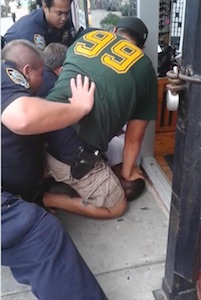
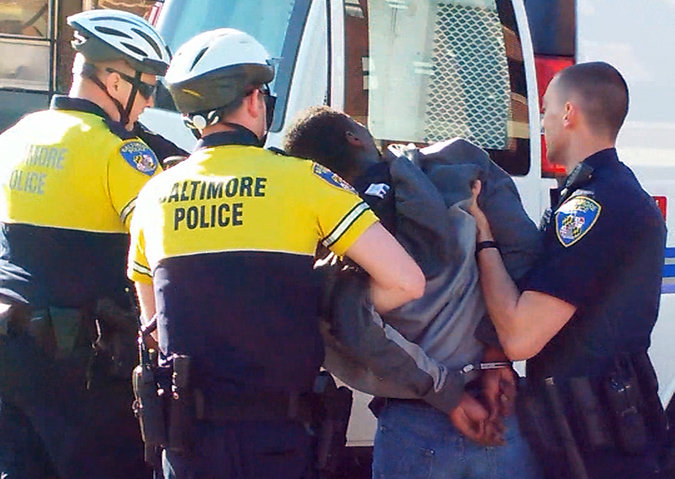
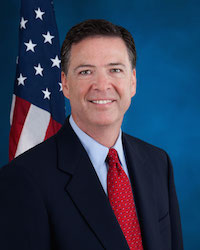

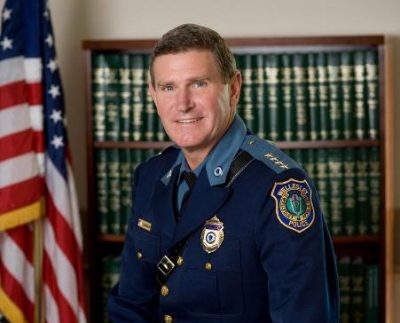




Adding another – https://abcnews.go.com/Politics/appeals-court-temporarily-halts-protections-journalists-legal-observers/story?id=72688755&fbclid=IwAR0DcfffzBSXqePs_O5rwHuhHkpvpbeamtPTKw9QnW2BmQPo7DyoNKKQxI4